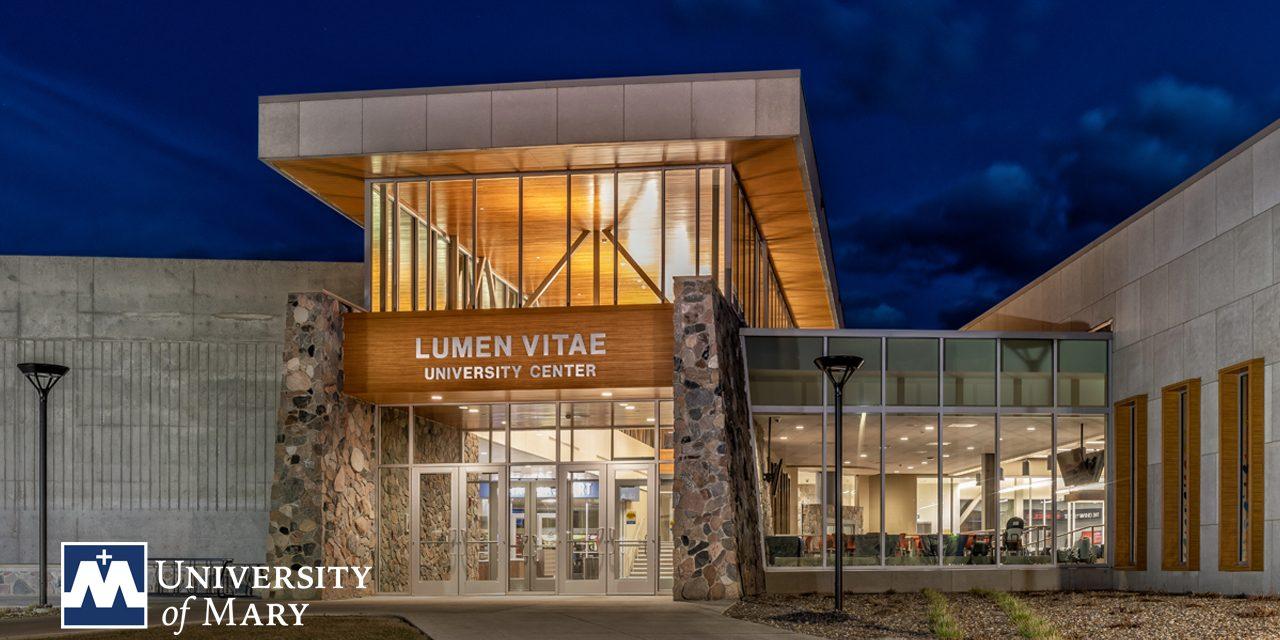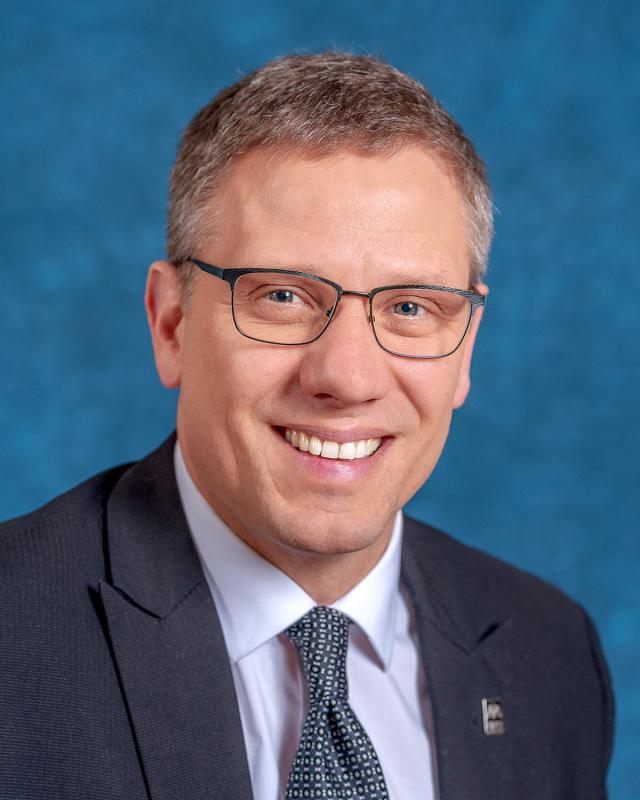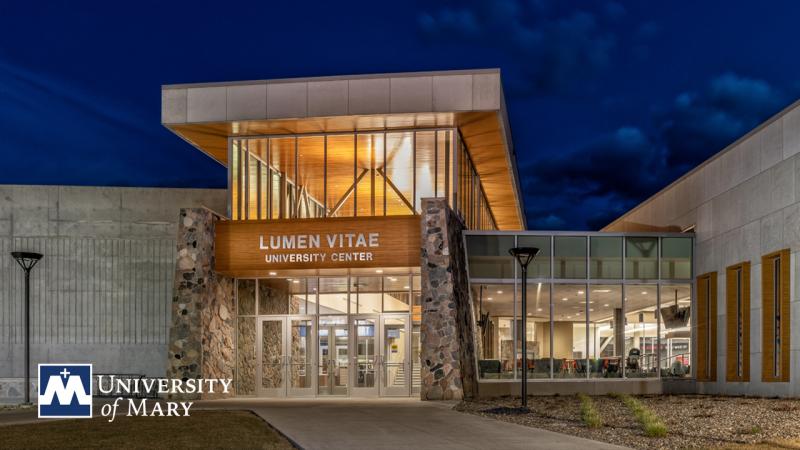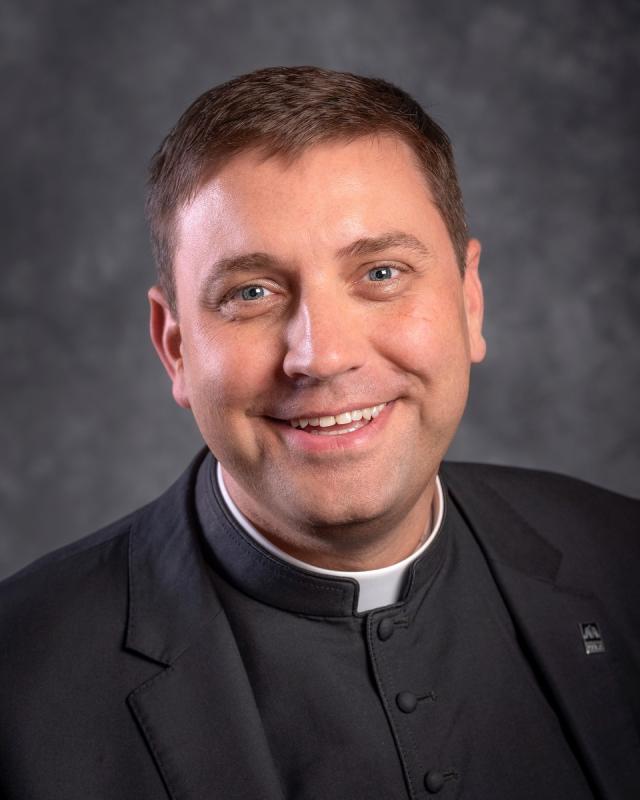University of Mary Announces Intention to Resume On-Campus Classes in September

BISMARCK, ND — The University of Mary is in the business of teaching, preparing, and caring for all of its students. Today, the private, Catholic university in Bismarck announced its plans for a safe, secure, and timely fall start at its Bismarck campus this September.
Before the COVID-19 Pandemic even hit the United States, and at the behest of its President Monsignor James Shea, University of Mary became one of the first universities to assemble an on-campus COVID-19 Emergency Response Team (ERT) to assess daily and hourly developments related to the virus domestically and internationally and adhere to regulations set forth by the North Dakota Department of Health (NDDOH) and the Centers for Disease Control (CDC). The 10-member ERT is now a permanent entity on campus chaired by Executive Vice President Jerome Richter and assisted by retired Brigadier General Dave Anderson, coordinator of Military Student Services at the University of Mary, and a member of the new, five-member North Dakota Ethics Commission (NDEC).

Executive Vice President
University of Mary
“We feel very confident in the staff and teams we’ve assembled on campus, and also our relationships, partnerships and connections with government agencies, healthcare facilities and the National Guard within the capital city, to implement our plan for our fall semester ‘opening,’” said Richter. “The spread of the COVID-19 virus has reminded us all that there are no certainties, no guaranties. But at the same time, it’s already taught us a great deal in humility and preparedness — day-to-day procedures, provisions and protocols that we all need to practice and make routine as our new normal. Overall, Bismarck is one of the safest communities in the country. Burleigh County has proven to be very vigilant and proactive in this pandemic fight. And more specifically, our expansive and wide-open campus located south of town uniquely gives our students the much needed open space for a safe learning environment.”
North Dakota is the only state in the nation that now exceeds the contact tracing requirements of the CDC, with plans to soon have twice the recommended number of public health workers identifying new cases and slowing the spread of the disease. Contact tracing is an integral part of the process of supporting patients and warning contacts of exposure in order to stop chains of virus transmission. Leading that statewide effort is an expert team of disease control investigators, and working in collaboration with the team is two-time graduate Vern Dosch, former CEO and founder of National Information Services Cooperative (NISC). Unfortunately, many other states, even the most rural, are struggling at this time with adequate levels of contact tracing.
Another person providing leadership for North Dakota’s overall response to COVID-19 is Brigadier General Bob Schulte, who also serves as professor of Physical Therapy at the University of Mary. Dr. Schulte works with experts from the NDDOH and North Dakota National Guard who lead North Dakota’s charge for comprehensive testing. In terms of COVID-19 testing, lab readiness, and tracing, the university’s premier status in the health sciences — along with its nationally-ranked nursing department – places the school in a very strong position. Mary’s fully-staffed student health clinic on campus is a satellite of CHI St. Alexius Medical Center, which has now partnered with Mayo Clinic to pioneer plasma treatment for COVID-19.

Having a fun and vibrant community in a rural area outside a community like Bismarck has its perks. The University of Mary is uniquely positioned high atop the banks of the Missouri River, overlooking the majestic river valley, from the same vantage point that Lewis and Clark once did. The University of Mary is one of only a handful of campuses across the United Sates to offer 24/7 dining with its Crow’s Nest Restaurant that seats over 600 people: so there is less crowding at peak times, allowing students to eat wherever they wish, whenever they wish, without space issues. With large-sized classrooms, but a small 14 to 1 student-to-faculty-ratio, the University of Mary doesn’t have huge, crowded, elbow-to-elbow learning quarters with large auditorium-style classes of 200 to 300 students, that could otherwise cause safety challenges.
Since February, when the virus spread through northern Italy, University of Mary’s COVID-19 Task Force, and later its ERT, implemented a strategy for the closure and removal of University of Mary students from its Rome Campus; students on its main campus south of Bismarck were able to isolate and adapt quite quickly and effectively before the complete shutdown; while not always ideal for learning, the school’s long history of online programs and an already vast integration of some of its daily coursework through online platforms, provided Mary’s world-class faculty with robust, flexible, and rapid integration and implementation of its comprehensive curriculums through the virtual platform to close out the spring semester and school year.
That quick action proved valuable for the preparedness of the University of Mary then, and moving forward now, said Shea.

President, University of Mary
“Our strong online capabilities, remote location, on-campus healthcare services, and spacious campus with overflow residence hall capacity, give us the capabilities to quarantine students, if needed, for a mandatory period of time, while still allowing them to learn online, before transitioning back into the classroom,” added Shea. “Also, we learned that we were able to maintain residence life as we did without an outbreak among our students and without community transmission traced to the University of Mary, is a testament to the outstanding work of our Emergency Response Team, our Residence Life staff, Dining Services, our faculty, and to the prudence and the cooperation of our students. Probably we had some divine protection, too! But we did it all without missing a beat and helped keep our students, faculty, staff, North Dakota, and the most vulnerable in our communities — safe.”
In March, at the recommendation of Governor Doug Burgum and the North Dakota Department of Health, the University of Mary fieldhouse was transformed into a Tier-3 field hospital and continues to be equipped and on standby to assist the state medically, if ever needed in the near future.
Barring any unforeseen interruptions, or any state or federal mandates related to the pandemic – and constantly monitoring any changing circumstances – the University of Mary is planning for a September 5 Freshmen Move-in followed by in-person classes starting on Tuesday, September 8, 2020.
